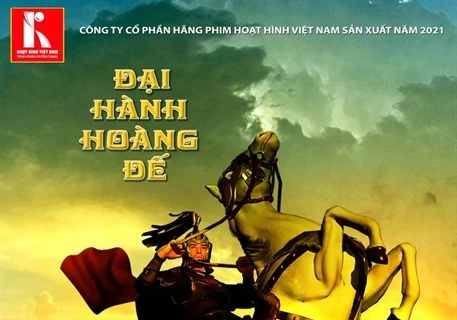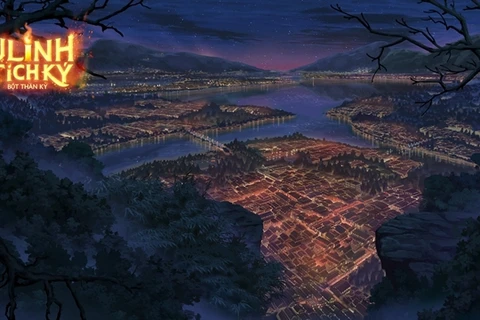Hanoi (VNA) - Experts from Japan, an animation powerhouse, believe that investing in strong original ideas, compelling stories, and influential characters is crucial for Vietnam’s animation.
Kishikawa Kosuke, a Japanese expert in animation promotion, said it is an industry with its own unique characteristics. Individuals and companies in Vietnam demonstrate great passion and enthusiasm, producing numerous short films. However, due to various reasons, there haven't been any full-length cinematic animations or brands from the country that have achieved global recognition.
Revealing his observation in an interview with VietnamPlus on the sidelines of a conference on the Japanese film industry’s success experience and orientations for cooperation with Vietnam. The event took place in the central coastal city of Da Nang on May 12 within the framework of the first Da Nang Asian Film Festival (DANAFF I), themed “Bridging Asia.”
According to the expert, one of the reasons behind this situation is that Vietnamese animators have yet to develop powerful, iconic, and influential animated characters.
This is a decisive factor in taking Vietnamese animation brands to the world, he emphasised.
Speaking at the conference, he used Doraemon as an example. The expert said he previously participated in a project sponsored by the Japanese government to promote dental care for young children in Vietnam, using Doraemon's image to attract attention.
Many children may not be interested in brushing their teeth, but they love Doraemon. This way, the character and the film were promoted and the commercial effectiveness and awareness were achieved, he explained.
Therefore, in addition to building iconic characters, Vietnam also needs to give support to promotional activities, he recommended.
Also at the conference, Ta Manh Hoang, Director of S Connect, shared that more animation companies in Vietnam are interested in and have established specialised departments for original ideas and intellectual property (IP).
These departments are responsible for designing concepts and creating characters based on customer criteria. "This is an important and relatively new activity in Vietnam, which many large enterprises have already implemented," Hoang added.
For many years, Vietnam has consistently appeared in the credits of numerous international projects related to animation, visual effects, and technology. This has captivated many audiences but also raised a question: Are ambitious and passionate Vietnamese animators limited to outsourcing work only?
According to Hoang, Vietnam's outsourcing capabilities are sufficient to participate in challenging and vital stages of animation. The local animator Dee Dee Animation, which outsourced projects for the US, is capable of drawing complex scenes.
Hoang affirmed: "In the future, Vietnam will undoubtedly have better animation filmmaking technology, as we now have foreign personnel and experts in our creative team. For example, S Connect has experts from the Philippines or Turkey to continuously exchange knowledge and expertise."
Chairwoman of the Vietnam Association of Film Promotion and Development Ngo Phuong Lan believed that despite facing many challenges, Vietnamese animation possesses great potential for cooperation with Japan and for growth at various levels. The key is to train the workforce to meet job requirements, particularly in production processes and optimal standards.
Kishikawa expressed his hope that Japan and Vietnam will collaborate on developing ideas for further implementation. This means joint work in building the storyline and characters and designing to convey the cultural essence of both sides./.


























